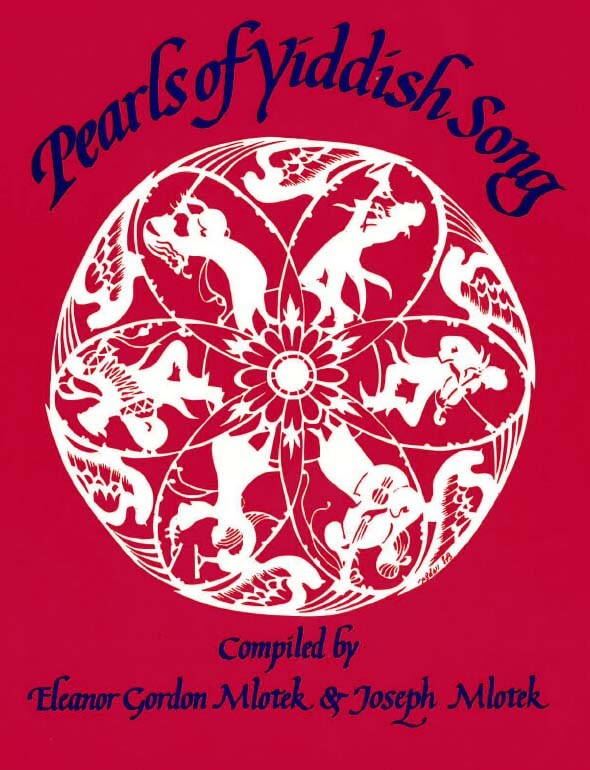Folksong published in 1927-1928 by Y. L. Cahan. The opening stanza resembles other Yiddish folksongs.

What good is a pretty vinyard to me
when I cannot plant it?
What good is a love affair to me
when we cannot marry?
Oy vey, Momma, I will never love again,
I won’t stand around by his gate;
He bragged to his friends
that I call for him and he does not want to come!
Oh, the night is bright for someone,
but for me the day is dark;
Oh, for someone there’s joy and happiness,
for me there is wailing and grief!
Vos toyg mir der sheyner vayngortn,
Az flantsn ken ikh im nit?
Vos toyg mir a libe tsu shpiln,
Az nemen kenen mir zikh nit!
Oy-vey, mame, kh’vel mer keyn libe nit shpiln,
Kh’vel mer bay zayn toyer nit shteyn;
Er hot zikh barimt far zayne khaveyrim,
Az ikh ruf im un er vil nit geyn!
Oy, far vemen es iz likhtik di nakht.
Far mir iz fintster der tog;
Oy, far vemen s’lz nakhes un freyd,
Far mir lz a yomer un a klog!
װאָס טױג מיר דער שײנער װײַנגאָרטן,
אַז פֿלאַנצן קען איך אים ניט?
װאָס טױג מיר אַ ליבע צו שפּילן,
אַז נעמען קענען מיר זיך ניט!
אױ־װײ מאַמע, כ’װעל מער קײן ליבע ניט שפּילן,
כ’װעל מער בײַ זײַן טױער ניט שטײן;
ער האָט זיך באַרימט פֿאַר זײַנע חבֿרים,
אַז איך רוף אים און ער װיל ניט גײן!
אױ, פֿאַר װעמען עס איז ליכטיק די נאַכט,
פֿאַר מיר איז פֿינצטער דער טאָג;
אױ, פֿאַר װעמען ס’איז נחת און פֿרײד,
פֿאַר מיר איז אַ יאָמער און אַ קלאָג!
Song Title: Vos Toyg Mir Der Sheyner Vayngortn?

First published in 1988 as Pearls of Yiddish Song: Favorite Folk, Art and Theatre Songs, this anthology contains 115 songs. Some material had never been published, while others, included in rare song collections or sheet music, were largely inaccessible. The songs presented reflect Jewish life in Eastern Europe and the United States and depict childhood, love, family celebrations, poverty, work and struggle. There are also songs from the Hasidic and Maskilic movements, songs of Zion and of America, as well as songs from the Yiddish theater.
The title of this anthology derives from the weekly two-page feature column “Pearls of Yiddish Poetry,” which the compilers Yosl and Chana Mlotek initiated in 1970 in the Yiddish newspaper Der Forvertz (the Yiddish Daily Forward). Hundreds of readers from around the world — including authors, composers, singers, actors — became co-participants in this collective folk project and recalled melodies, lines, fragments, stanzas and their variants of songs, poems, and plays which they had heard in their youth. At first, readers sent in only written material. Later, they also taped songs on cassettes, many of whose melodies had, until then, never been recorded. They also identified and supplied missing information regarding lyricists, poets, and composers and described the circumstances surrounding the songs’ origins, their dissemination, diffusion and impact.